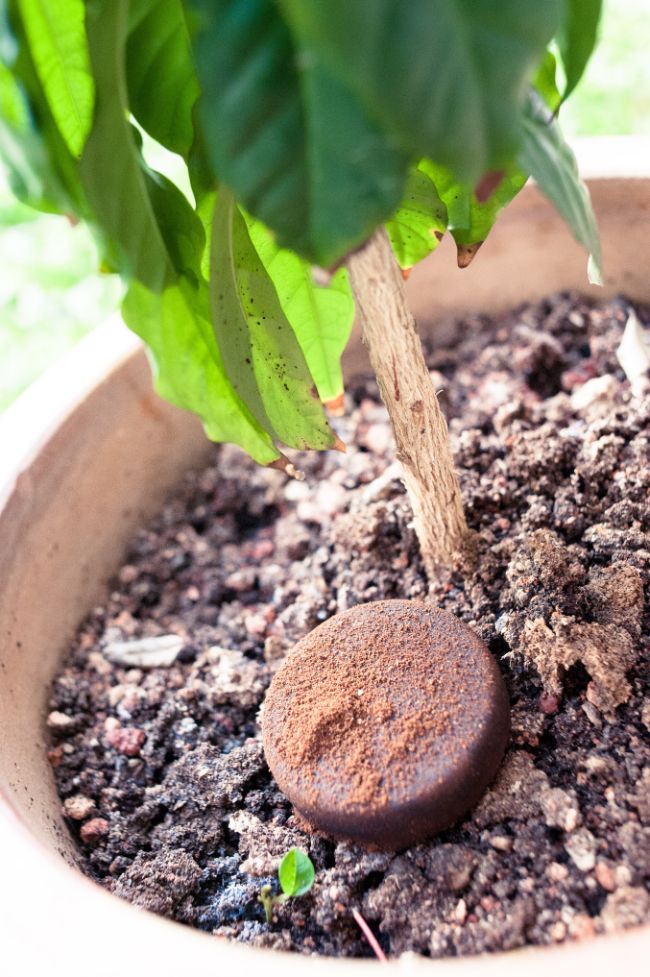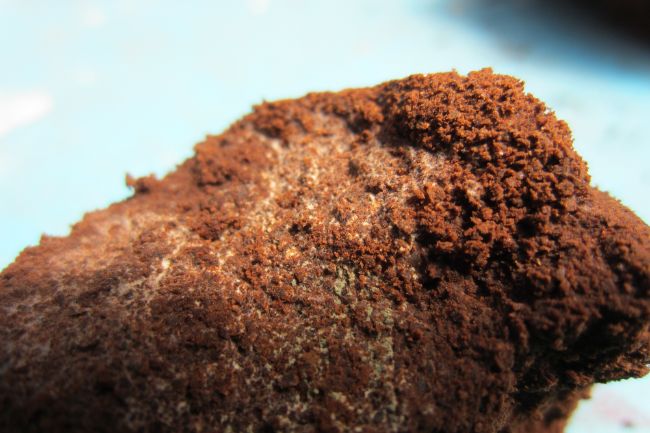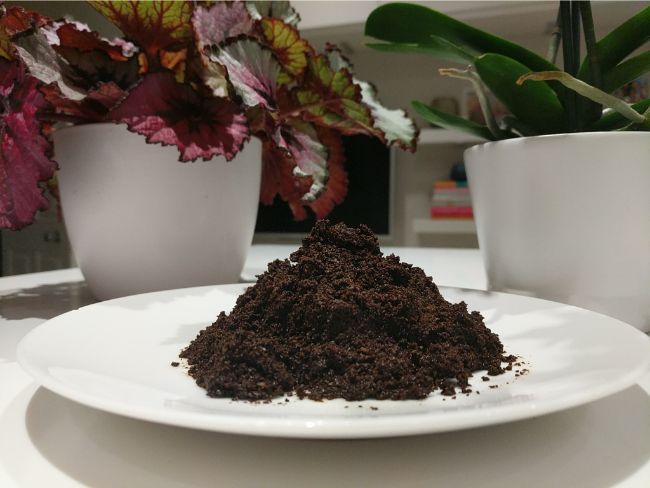Fertilizing indoor plants is an important aspect of houseplant care, and there are lots of natural fertilizers that you may have thought about trying. One that many people ask about is whether you can use coffee grounds to fertilize indoor plants.
Can you use coffee grounds to fertilize indoor plants?- Coffee grounds can be used to fertilize indoor plants, but you are best to make compost with them first. Directly applying coffee grounds to indoor plant soil can cause excessive moisture retention, fungal overgrowth and even impair plant growth.
Coffee grounds are a very useful source of nutrients that indoor plants can use effectively, and a very cost effective fertilizer. Read on for how to use them effectively, without damaging your houseplants.
Why Use Coffee Grounds To Fertilize Indoor Plants?
Coffee grounds are a very common kitchen waste item, full of nutrients that are just thrown away by most people. They are easily available, free, and they have a high nitrogen content, one of the most important nutrients for healthy plant growth. Using coffee grounds on indoor plants is also a good way to reduce household waste production.
People have been using coffee grounds in their gardens for years with reasonable success so it’s only natural for people to experiment with using coffee grounds to fertilize indoor plants. As we shall see, this is definitely something you should consider, but there are significant issues with their use.
What Are The Best Ways To Use Coffee Grounds To Fertilize Indoor Plants
While some people might be inclined to add coffee grounds directly to the top of the soil of their indoor plants, this is not recommended and can cause a number of problems. However, there are three great options for how your indoor plants can benefit from coffee grounds as a fertilizer.
1. Use Coffee Grounds To Make Compost
By far the best way to make use of coffee grounds is to use them to make compost. Add all your used coffee grounds to your compost pile and wait until your compost is ready to be used.
Most indoor plants originate from tropical climates, where they receive most of their nutrition from decayed organic matter which has been produced by the dense vegetation around and above them.
Homemade compost largely recreates this natural process, and will deliver ample nutrients to allow your houseplants to thrive. The high nitrogen content of coffee grounds (NPK 2.1-0.3-0.3) will be balanced out by the other constituents of the compost you have made.
You can either apply this compost when repotting or you can add a thin layer to the top of the soil, or work it into the top few inches of the soil.
Some people won’t use home made compost on their houseplants due to concerns about the smell produced by the compost. In my experience, this is not an issue. Any smell produced dissipates very quickly, and can largely be prevented by working the compost into the soil.
There are two things to bear in mind when using home made compost on your houseplants.
Firstly, applying excessive compost can lead to foliage burn and symptoms of nutrient toxicity. Add a maximum of one inch of compost to the pot to prevent this.
Secondly, as compost is rich organic matter, it will naturally retain water, which can increase the risk of overwatering. Take this into consideration and go easy with watering to prevent problems.
2. Make Liquid Coffee Houseplant Fertilizer
Although I wouldn’t recommend pouring coffee over the soil of your indoor plants, you can make a compost “tea” with your coffee grounds that will work well on your houseplants.
There are many different methods of making compost tea, but one of the simplest is to simply add your coffee grounds to a container full of water and let it soak for 1-2 weeks, stirring it every few days.
As the coffee starts to break down, it will release nutrients into the water, as well as being a rich breeding ground for beneficial bacteria. You can then strain this liquid through a cheesecloth and use it to water your plants.
This not only provides a good source of nutrients, but adds beneficial bacteria, which can improve the health of the soil and your plants.

3. Add Coffee Grounds To The Potting Mix When Repotting
As coffee grounds are an organic material, they release their nutrient content slowly as they decompose in the soil. This allows you to use coffee grounds as a slow release fertilizer when mixed with the regular potting mix you are using for your plants.
Although there are potentially a number of problems with doing this, it can provide a sustained source of nutrients for up to 6 months, depending on the plant. Coffee grounds are one of many natural houseplant fertilizers, but you should take care to use them properly, to get the best results.
Coffee grounds contain a large amount of nitrogen compared to phosphorus and potassium. Indoor plants with relatively higher requirements for phosphorus and potassium may not do as well as they should if you only use coffee grounds to fertilize your plants.
Using coffee grounds in your potting mix does come with a few problems which I will talk about in the next section.
Problems With Using Coffee Grounds To Fertilize Indoor Plants
Although we’ve discussed some of the ways you may wish to use coffee grounds to fertilize your indoor plants, it is important to highlight the negative aspects in a little more detail.
Excess Moisture Retention
Coffee grounds are exceptionally good at retaining moisture. Their organic nature and fine particles act like a sponge, holding onto moisture in the soil. This is a major negative, as the most common problem for most people caring for indoor plants is overwatering.
Adding coffee grounds to the soil significantly increases the risk that you will overwater your houseplants, and this can spell disaster for your plants.
If you do use coffee grounds on your indoor plants, either directly or as part of a compost, you can reduce the risk of overwatering by altering the composition of the soil that you use.
By adding more coarse sand or perlite to the potting mix, this will increase drainage, allowing the soil to dry out faster after watering, reducing the risk of overwatering and root rot.
Other options include using a porous pot, and/or a smaller pot. Both these changes will lead to faster drying of the soil, reducing the risk of overwatering.
Promotes Fungal Growth
This is more of an issue if you add coffee grounds to the surface of the soil of your houseplants. Coffee grounds provide an ideal breeding ground for fungal organisms, and this can lead to fungal disease in your plants.
It is particularly disappointing when you try to help feed your plants and promote their health, only to cause them a fungal disease which can do a lot of harm.
This problem can be reduced by ensuring the coffee grounds are worked well into the soil. Ideally, using coffee grounds compost, or adding coffee grounds when repotting will reduce this risk.

Attracts Pests
Whilst some pests may be deterred by coffee grounds, there are many pests and insects that will be attracted by the conditions that coffee grounds in the soil of your houseplants creates.
Once again, this highlights why adding coffee grounds to the surface of the soil is not recommended. Using coffee grounds to make compost is by far the best option, if you want to use coffee grounds to fertilize indoor plants.
Coffee Grounds Can Actually Inhibit The Growth Of Some Plants
There have been a number of small scale studies that have shown that coffee grounds added directly to the soil can actually inhibit plant growth, particularly in seedlings and young plants. This is thought to be due to the caffeine content of coffee grounds.
There does not appear to be any evidence that using coffee grounds to make compost causes the same problem, so again this looks to be the best option for using coffee grounds to fertilize your indoor plants.
There Are Much Better Alternatives
I suppose the bottom line is that using coffee grounds to fertilize houseplants is less than ideal. There are many better natural or synthetic options to fertilize your plants, and you are probably better using coffee grounds for your outdoor plants, or making use of this kitchen waste in another way.
Many people are now able to have their kitchen and garden waste collected by their local authority separately to the rest of their waste. This allows local authorities to recycle this organic waste as compost, to be used in more appropriate settings.
Conclusion
Whilst you can use coffee grounds to fertilize indoor plants, you need to avoid the problems that come with this. For most people, I would recommend using coffee grounds for your outdoor garden and using alternative options to fertilize your houseplants.
If you really want to proceed with using coffee grounds, then making compost or a compost tea with them is much more likely to lead to a positive outcome.
Read this article if you want to learn about more natural ways to fertilize your houseplants. Alternatively, see this article to find out which fertilizer I use on almost all my indoor plants.

